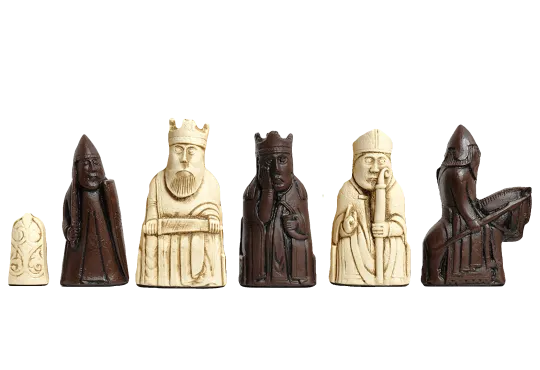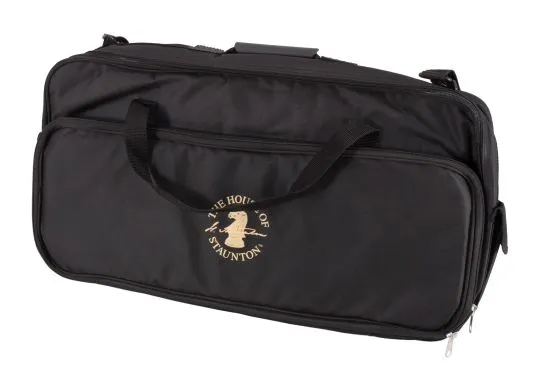Our Complete Guide to Chess Piece Sizes
Have you ever tried playing chess with pieces that wobble or look like they’ve wandered onto the wrong board? Okay, let’s not beat around the bush. Getting the right size chess pieces makes the game very enjoyable.
Here’s the thing — chess pieces aren’t one-size-fits-all. The size of your pieces also shapes your experience. Even the material — classic wood, durable plastic, or luxurious marble — can make or break your vibe.

Ultimately, the right chess piece size transforms your game.
It ensures you’re not just playing—you’re strategizing on a board that feels just right, with pieces that look like they belong. Let’s explore how to find your perfect fit.
Table of contents
- Understanding Tournament Standards for Chess Piece Sizes
- Matching Chess Piece Sizes to Board Squares
- Historical Influence: The Staunton Style
- Tips for Balancing Aesthetics and Functionality
- The Role of Weighted Pieces in Gameplay
- Giant and Novelty Sets: Beyond the Standard Dimensions
- Conclusion
- Frequently Asked Questions
Understanding Tournament Standards for Chess Piece Sizes
Tournament chess is all about precision, and your chess pieces need to follow suit.
Now, enter FIDE (World Chess Federation) and the USCF (United States Chess Federation) regulations, which are the ultimate arbiters for competitive chess gear. These standards don’t just ensure uniformity—they level the playing field, so no one has an unfair advantage.
Let’s start with the king, the centerpiece of any set.
FIDE regulations recommend a king height of 9.5 cm (3.75 inches), with a base diameter that’s 40-50% of its height. USCF-approved sets stick to similar measurements, ensuring compatibility with boards featuring 2.25-inch squares.
This balance keeps your pieces stable and your board uncluttered.
Speaking of stability, tournament pieces are typically weighted, with double- and triple-weighted options leading the pack.
Why? Because a solid base keeps your pieces steady, even during high-speed blitz games. Nobody wants a pawn tipping over in a critical moment.
Materials matter, too! Wood—like boxwood or maple—is the classic choice, offering elegance and durability. But, plastic sets are gaining popularity for their affordability and sleek designs.
So, then, what’s the one non-negotiable? Visual clarity.
Staunton-style pieces, with their distinct shapes and matte finishes, are a must for easy recognition, even under pressure.
When you’re competing, every detail counts. Tournament standards ensure that your pieces not only meet the rules but also enhance your focus, making every move deliberate and precise.
-
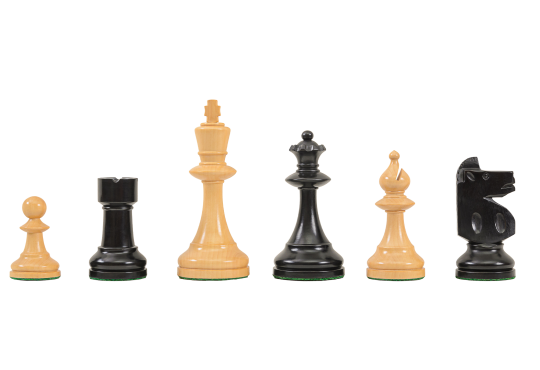 Free Worldwide Shipping
The W.T. Pinney Series Chess Pieces - The Camaratta Collection - 4.75" King
Free Worldwide Shipping
The W.T. Pinney Series Chess Pieces - The Camaratta Collection - 4.75" KingStarting at $339.00
To $1,323.00
Matching Chess Piece Sizes to Board Squares
Imagine trying to squeeze four knights into a single square or watching your pawns drown in oversized spaces—it’s a chess player’s nightmare. That’s where the 75-80% rule comes in, ensuring your pieces and board work in perfect harmony.

Here’s how it works: the base diameter of your king should take up 75-80% of a square’s width.
For a board with 2.25-inch squares (the standard for tournaments), the king’s base should measure about 1.7 to 1.8 inches. This ratio keeps your pieces stable and your board easy to navigate.
The “Four-Pawn Test” is a simple way to check if your set fits your board. Place four pawns in one square—if they fit without overlapping, you’re good to go.
Would you like to know about another trick? Try sliding a third piece between a king and queen on adjacent squares. If it fits, your board isn’t overcrowded.
But, we’re sure you must be wondering why does all this even matter?
The right proportions don’t just improve gameplay—they make your board visually appealing. Whether you’re planning your next attack or admiring your setup, a well-matched set enhances the entire experience.
Historical Influence: The Staunton Style
When it comes to chess piece sizes, the Staunton style reigns supreme.
But we’re sure you’re wondering why. It’s all about simplicity, functionality, and timeless appeal.
Staunton pieces were designed (in 1849) to solve a key problem: confusing designs.

Before Staunton, chess sets were often ornate to the point of impracticality. Knights looked like bishops, pawns were barely distinguishable, and, as you can probably imagine, gameplay suffered.
Nathaniel Cook’s Staunton design changed all that. Named after chess legend Howard Staunton, the set featured clean lines, distinct shapes, and a balanced weight.
The king, with its regal crown, is unmistakable. The queen’s rounded top, the knight’s horse head, and the bishop’s subtle notch ensure no mix-ups during gameplay. Even pawns, with their modest size, exude charm.
-
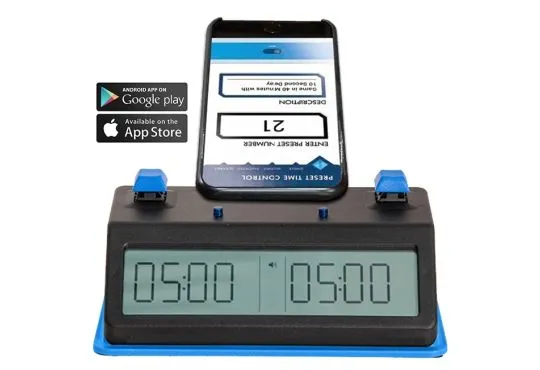 Tap N Set Digital Chess Clock - Available in Push Button or Touch Sensor The Official Chess Clock of the US Chess Federation - The World's Only Smart Phone Programmable Clock
Tap N Set Digital Chess Clock - Available in Push Button or Touch Sensor The Official Chess Clock of the US Chess Federation - The World's Only Smart Phone Programmable ClockStarting at $54.95
To $59.95
-
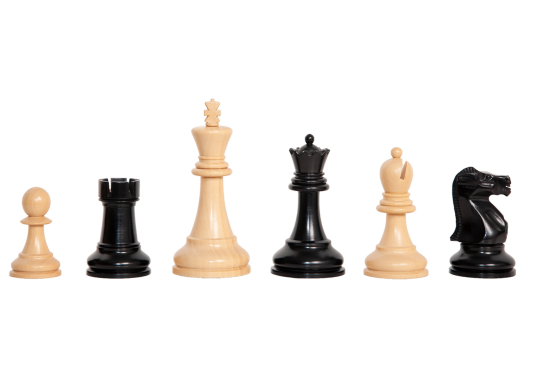 Free Worldwide Shipping
The DGT Projects Enabled Electronic Chess Pieces - Improved Fischer Spassky Series - 3.75" King
Free Worldwide Shipping
The DGT Projects Enabled Electronic Chess Pieces - Improved Fischer Spassky Series - 3.75" KingStarting at $559.00
To $1,818.00
Staunton's pieces are also a testament to balance.
Their proportions are designed to match tournament boards, with a king height of 3.75 inches being the gold standard. This ensures every piece feels at home on the board, whether you’re strategizing in a tournament or enjoying a casual game.
Today, Staunton sets are the global standard for tournaments and casual play alike.
Their blend of form and function makes them a favorite among players of all levels. It’s no wonder they’ve stood the test of time, proving that sometimes, the classics really are the best.
Tips for Balancing Aesthetics and Functionality
Balancing aesthetics and functionality in a chess set is like finding the perfect harmony between art and strategy. You want a set that looks amazing but also plays like a dream. So, how do you strike that balance?
1. Proportions
The king’s base-to-square ratio (remember the 75-80% rule?) is a non-negotiable starting point. Pieces that fit well on the board not only enhance gameplay but also make the set visually cohesive. No one wants a board that looks like it’s hosting a mismatched chess party.
2. Design
Staunton-style pieces are the gold standard for good reason—they’re simple, elegant, and functional. But if you’re drawn to artistic designs, make sure they’re still practical.
A knight with too many frills might look cool, but if it’s hard to distinguish from a bishop during a tense game, it’s more trouble than it’s worth.
3. Material
Wooden sets scream classic sophistication, but plastic pieces are easier to handle for quick games.
Weighted pieces are ideal for gameplay — they stay put, even during rapid moves. And don’t forget the board! A polished wood board pairs beautifully with Staunton pieces, while marble or glass boards complement luxury sets.
Ultimately, a great chess set should be a joy to use and a treat to look at. It’s about finding that sweet spot where form meets function, so every game feels like a masterpiece in the making.
The Role of Weighted Pieces in Gameplay
There was a time when we tried moving a chess piece and accidentally sent it flying across the board. (It was one heated game!)
That’s where weighted pieces come to the rescue. Double and triple-weighted chess pieces are a game-changer, literally. They’re not just about staying put — they add a level of control and confidence that can elevate your gameplay.
Alright, then, what makes them special?
Weighted pieces are heavier at the base, giving them better stability. Whether you’re playing a leisurely game or a high-speed blitz match, they’re less likely to topple over, even with quick moves.
This is especially important in tournaments, where precision is everything, and a wobbly rook can be distracting.
But it’s not just about function—there’s a tactile satisfaction to weighted pieces. That satisfying heft as you lift the queen or slide the bishop across the board? How amazing does that feel?
However, if you’re someone who prefers rapid games, lighter weighted pieces can be a better choice. They’re easier to maneuver at lightning speed without losing that stability. It’s all about finding what works for your play style.
Not to sound too over-the-top, but weighted pieces are the unsung heroes of chess sets.
They bring balance, stability, and a touch of elegance to every move. Whether you’re a beginner or a seasoned player, investing in a weighted set is a decision your future games will thank you for.
-
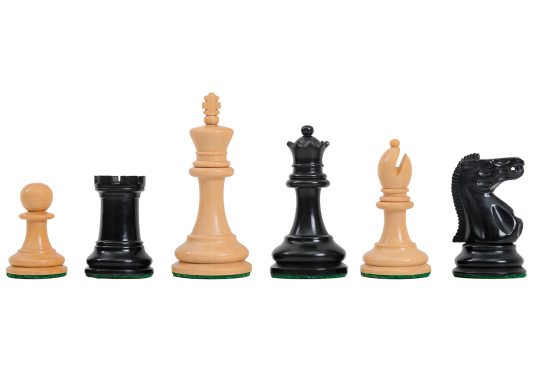 Free Worldwide Shipping
The Library Collection - The Zukertort Series Luxury Chess Pieces - 2.875" King
Free Worldwide Shipping
The Library Collection - The Zukertort Series Luxury Chess Pieces - 2.875" KingStarting at $179.00
To $727.00
Giant and Novelty Sets: Beyond the Standard Dimensions
Chess isn’t just a game — it’s a statement.
And that is where giant and novelty chess sets come in. They turn the classic strategy game into something larger than life (literally). These sets aren’t your standard board-and-pieces combo. They’re bold, eye-catching, and undeniably fun.
Let’s start with one of our favorites — giants!
Just picture life-sized pawns, towering kings, and a board you can walk on. Sets like the House of Staunton's Giant Outdoor Chess Set take the game to a whole new level.
With kings standing up to 25 inches tall, these sets are ideal for outdoor play, garden decor, or even community events. The durable plastic pieces are weather-resistant, so you can leave them outside without worrying about damage.

Plus, they’re lightweight enough to move around but sturdy enough to stay upright during play.
On the other end of the spectrum, novelty sets are all about creativity.
The USCF Sales Themed Chess Sets offer a wide variety of unique designs, like their Lewis Chessmen or the Roman Themed Collection.

These sets trade traditional proportions for intricate details and imaginative themes. They’re perfect for collectors or as a centerpiece for a themed chess night.
Of course, these sets aren’t for everyone. They’re more about the experience than serious play. But if you’re looking to add some flair to your collection or spark conversations at parties, they’re a fantastic choice.
Conclusion
Choosing the right chess piece size isn’t just a practical decision.
Whether you’re picking a classic Staunton set for serious play or a quirky novelty set for fun, the right size makes every game more enjoyable. They’re not just tools — they’re an extension of your strategy, your style, and your love for the game.
So, take the time to find pieces that feel just right for you. Match them to your board, test their stability, and don’t be afraid to experiment with different materials or designs.
After all, chess is as much about the experience as it is about the strategy.
Frequently Asked Questions
You can use chess pieces with bases that are 1.5 to 1.87 inches for a 2.5-inch square board, or you can use pieces with bases that are 1.2 to 1.75 inches for a smaller 2-inch square board.
Chess pieces can differ in size based on the set. In the German Knight chess set, for instance, a knight's height is 2.6 inches (66 mm), whereas in the Bridle Knight chess set, it is 3.2 inches (81 mm). Six centimeters (cm) is the recommended height for a chess knight.
The pieces should be 9.5 cm tall for the King, 8.5 cm for the Queen, 7 cm for the Bishop, 6 cm for the Knight, 5.5 cm for the Rook, and 5 cm for the Pawn. The base of the piece should have a diameter that is 40–50% of its height.


